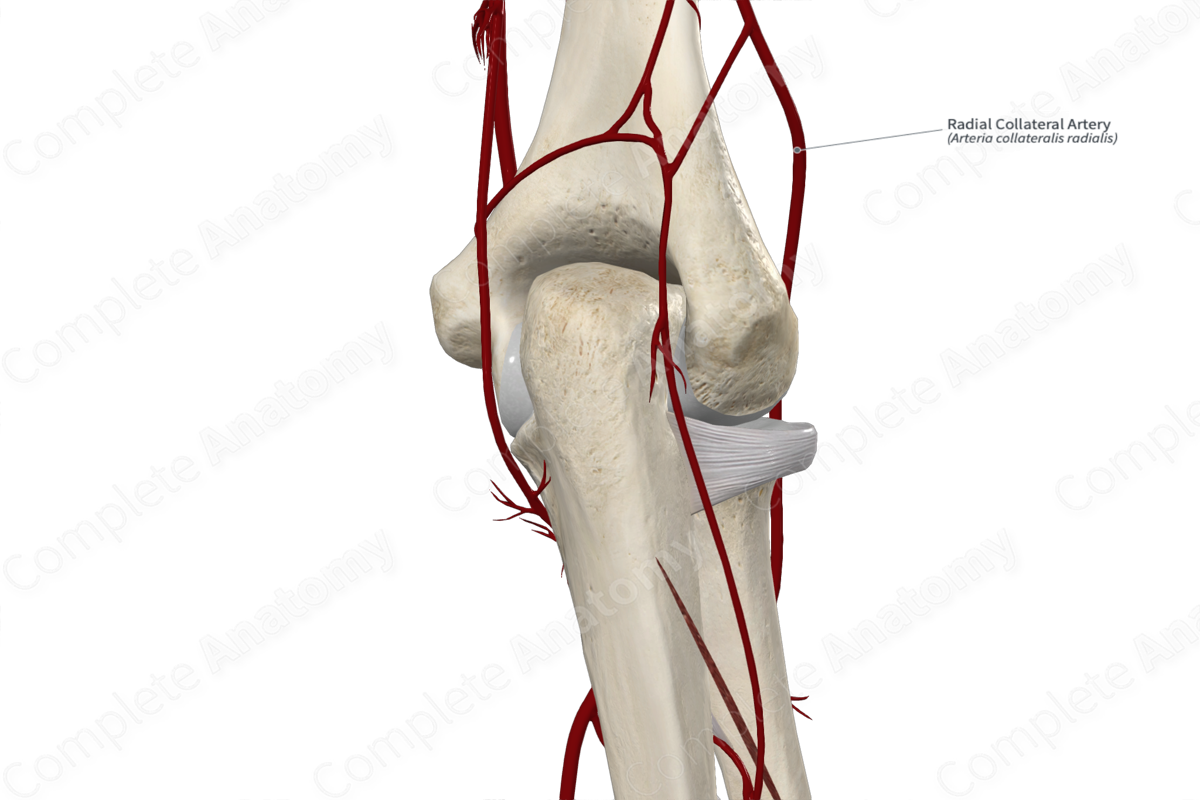
Quick Facts
Origin: Deep brachial artery.
Course: Distally in the posterior compartment of the arm.
Branches: No named branches.
Supplied Structures: Brachialis and brachioradialis muscles, the radial nerve, cutaneous supply to the lateral aspect of the arm.
Origin
The terminal branches of the deep brachial artery are the larger middle collateral artery and the smaller radial collateral artery.
Course
Proximally, the radial collateral artery lies with the radial artery on the posterior surface of the humerus. As it courses distally, it sits between the brachialis and brachioradialis muscles. It courses to the distal aspect of the lateral epicondyle of the humerus (Standring, 2016).
Branches
The radial collateral artery gives off muscular branches to the brachialis and brachioradialis muscle and forms an anastomosis with the radial recurrent artery.
Supplied Structures
The radial collateral artery contributes to the supply of the brachialis and the brachioradialis muscles, as well as the radial nerve. It also cutaneous supply to the lateral aspect of the arm.
References
Standring, S. (2016) Gray's Anatomy: The Anatomical Basis of Clinical Practice. Gray's Anatomy Series 41st edn.: Elsevier Limited.
Learn more about this topic from other Elsevier products
Artery

Arteries are vessels transporting blood between heart, tissues, and other organs in order to supply them with nutrition and oxygen.




